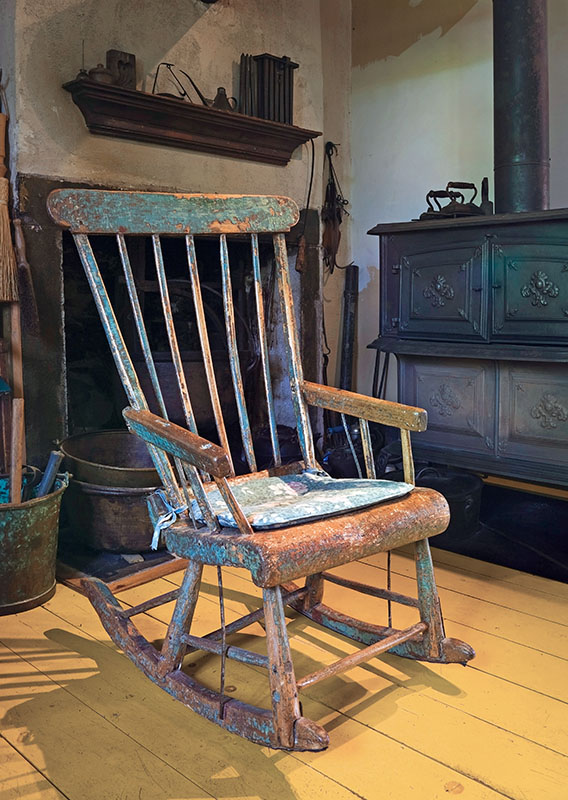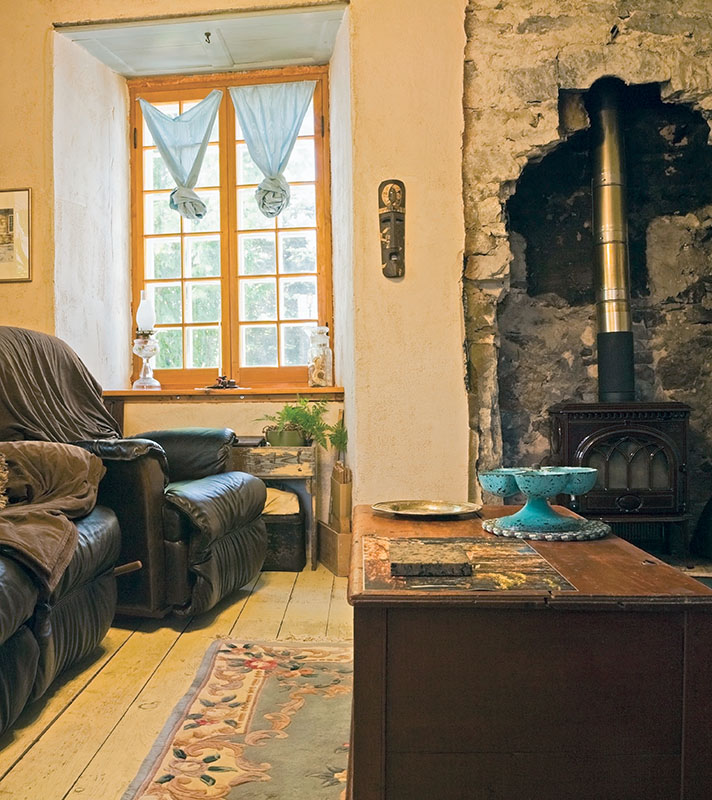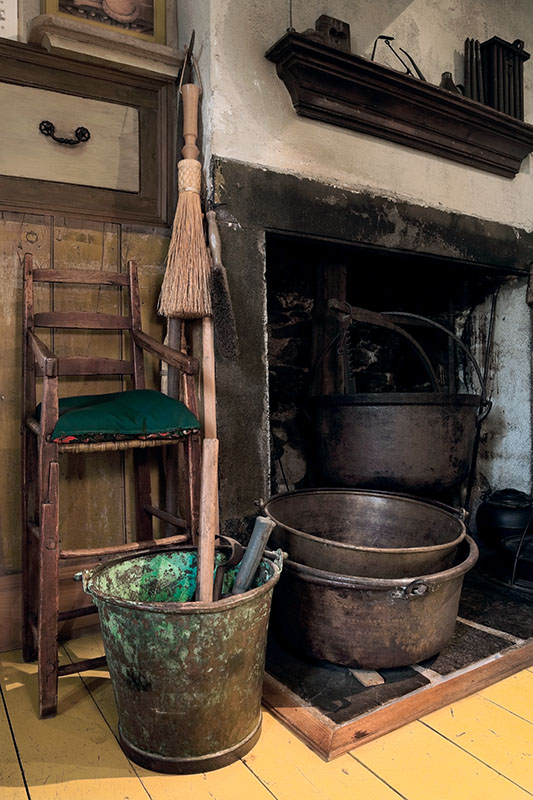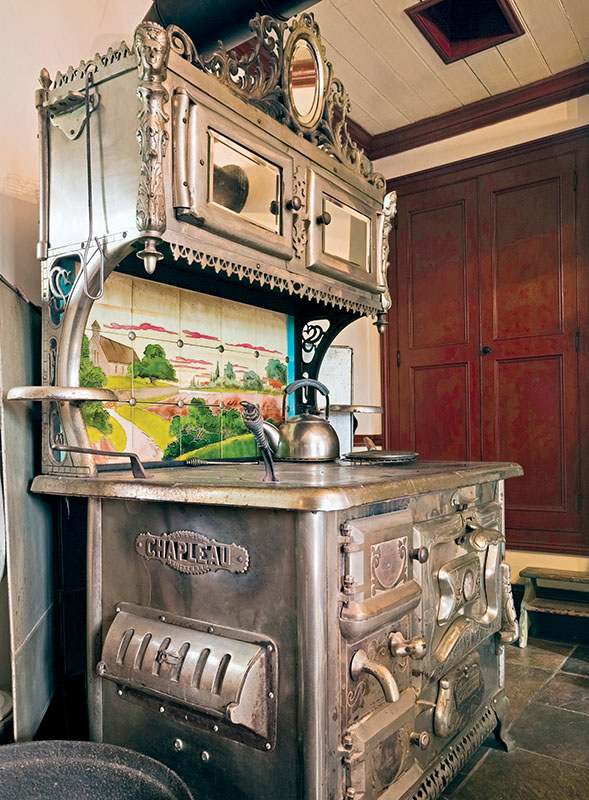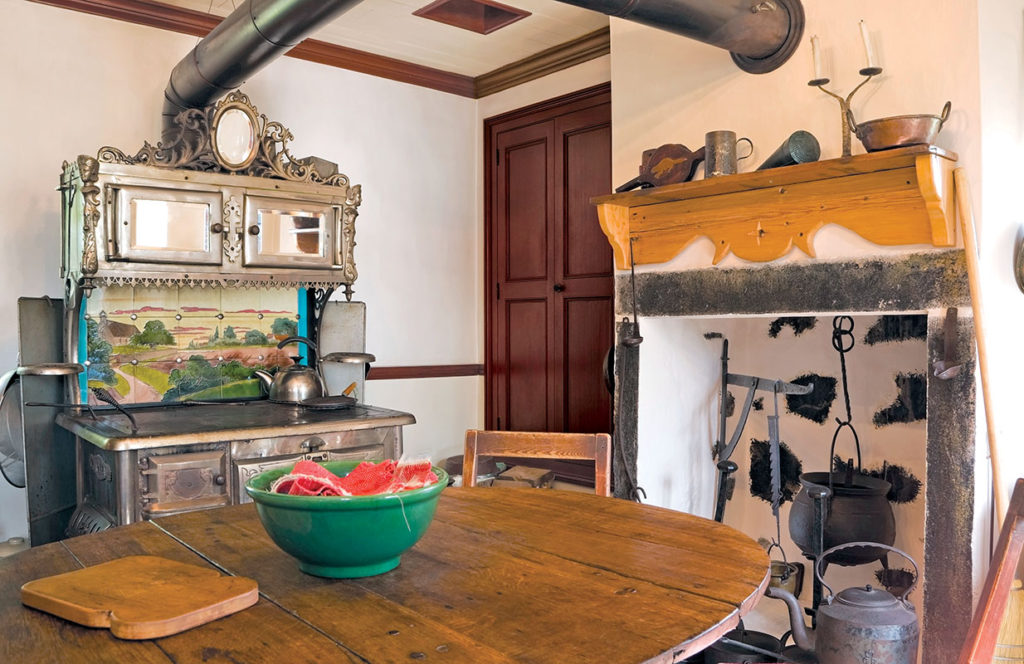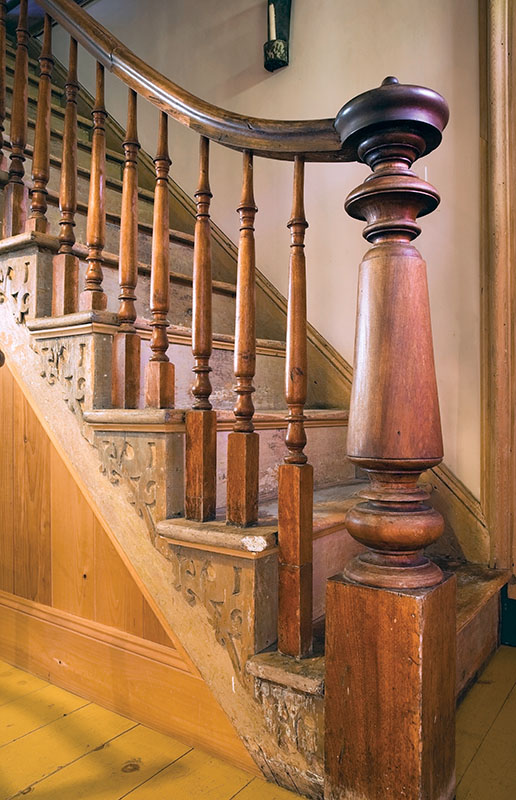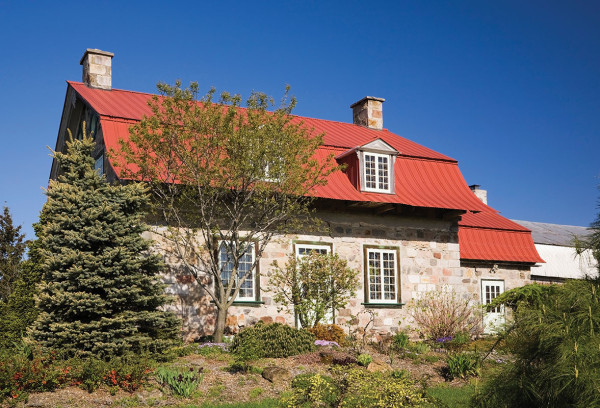
The unadorned façade, an example of Scottish architecture, has stayed true through the years. Metal roofing painted red draws attention to the eave detail.
Photos by Perry Mastrovito
The property might be called an estate, as it includes 130 acres of land; fields are rented to local farmers. Old barns sit near a wood lot that slopes down to the river. The landscaped garden, created over two decades, is vast at 250,000 square feet. But the old house set on a knoll is the center of attention.
Sturdily mocking the passage of time for the past 178 years, it is a fine example of Scottish architecture. It is not tucked away in the Highlands, however, but rather sits in the quaint Quebec village of L’Epiphanie, in the Saint Lawrence River Valley. The fieldstone house was built by the Ewins, a well-to-do Scottish family, who settled in this part of Quebec because a small community of their kin was already here.
Lucie Archambault and her husband are today’s preservation-minded owners. Lucie is a woman with lots of energy and talent to spare—she restores furniture, renovates houses, and landscapes professionally. The Archambaults have owned the house for 28 years, moving in for good in 1993; they restored one room at a time, and they started from scratch on the gardens.
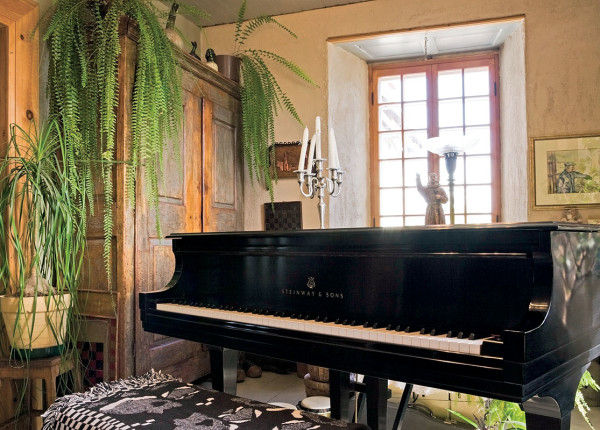
This side of the big living room is furnished as a music room, with frilly green plants around the Steinway grand piano.
“It was in desperate need of repair,” Lucie admits. The kitchen floor lay on bare earth; they dug foundations. Still, wonderful surprises were in store. Behind later drywall, the couple found delicate old mouldings, a wall cupboard, and a forgotten fireplace. Lucie and her husband were raising three young children during the years of restoration. It was a labor of love. “I’ve been fascinated by history and old things since my teens,” says Lucie, the avid gardener whose passion is evident.
The ground floor has the kitchen, the open dining room, a big living room, and a bathroom. A giant wood-burning cook stove commands attention; its warming ovens are inset with mirrors, and a ceramic landscape scene fills the backsplash. A bread bin under one window has its original paint and is older than the house. Family dinners take place around a Louis XIII-style oak table with sculpted legs. The kitchen’s functioning fireplace gets occasional use. Lucie tends to the black soot marks with lime paint [whitewash , or calcium hydroxide solution and chalk]. Atop a cupboard sits an old copper teapot; a jumble of wooden implements, cast-iron pots, and earthenware jugs give the room a convivial atmosphere. Similar objects fill the dining room, which has another fireplace and an old woodstove with the curious name L’Indien, made by a Montreal foundry.
To furnish the house, Lucie raided her father’s attic, where she found heirlooms stored and forgotten. Other pieces came from an antiques dealer specializing in 18th- and 19th-century furniture; Lucie occasionally worked for him. “I tried to keep a certain unity, choosing pieces from the period of the house.”
An imposing floor clock built by Ira Twiss dates from the early 19th century. Leather sofas face a woodstove where once there had been a fireplace. The window wells reveal the thickness of the stone walls, which are almost three feet deep. Walls narrow as they reach the attic; ceilings on the ground floor are nine feet, but just seven-and-a-half feet on the top floor.
Almost gleefully, Lucie says that “there’s always something to be done!” She finds housecleaning gratifying. “All the things were made with care, and have passed the test of time…It’s almost like they have a soul, they don’t go out of date, they’ll last if we take care of them,” she says. “It feels good in my heart to know I’m doing my part to preserve this heritage.”
Lucie designed and planted her colorful gardens to blend with the friendly rusticity in the house. Mostly indigenous vegetation lends a natural look, yet the gardens respect the rules of landscape design. Amidst shrubbery and flowers, ground covers, and evergreens that lend structure in winter, we could make believe we are, indeed, in Scotland.
A Gentle Approach
The most ornamental element of the old farmhouse is the staircase. The handrail is sculpted oak, balusters and newel post delicately turned, spandrel ornaments in place. Treads are worn and layered with patina—and, as with the rest of the old house, they have been preserved as they are. Painted floors, unembellished hearths, and antiques in original finishes complete the picture.



